Finding Balance Town Hall Recap: A Morongo Basin Conversation on Development in Our Desert Ecosystem
Residents from throughout the Morongo Basin gathered in Twentynine Palms to discuss the need to work together for sustainable development.
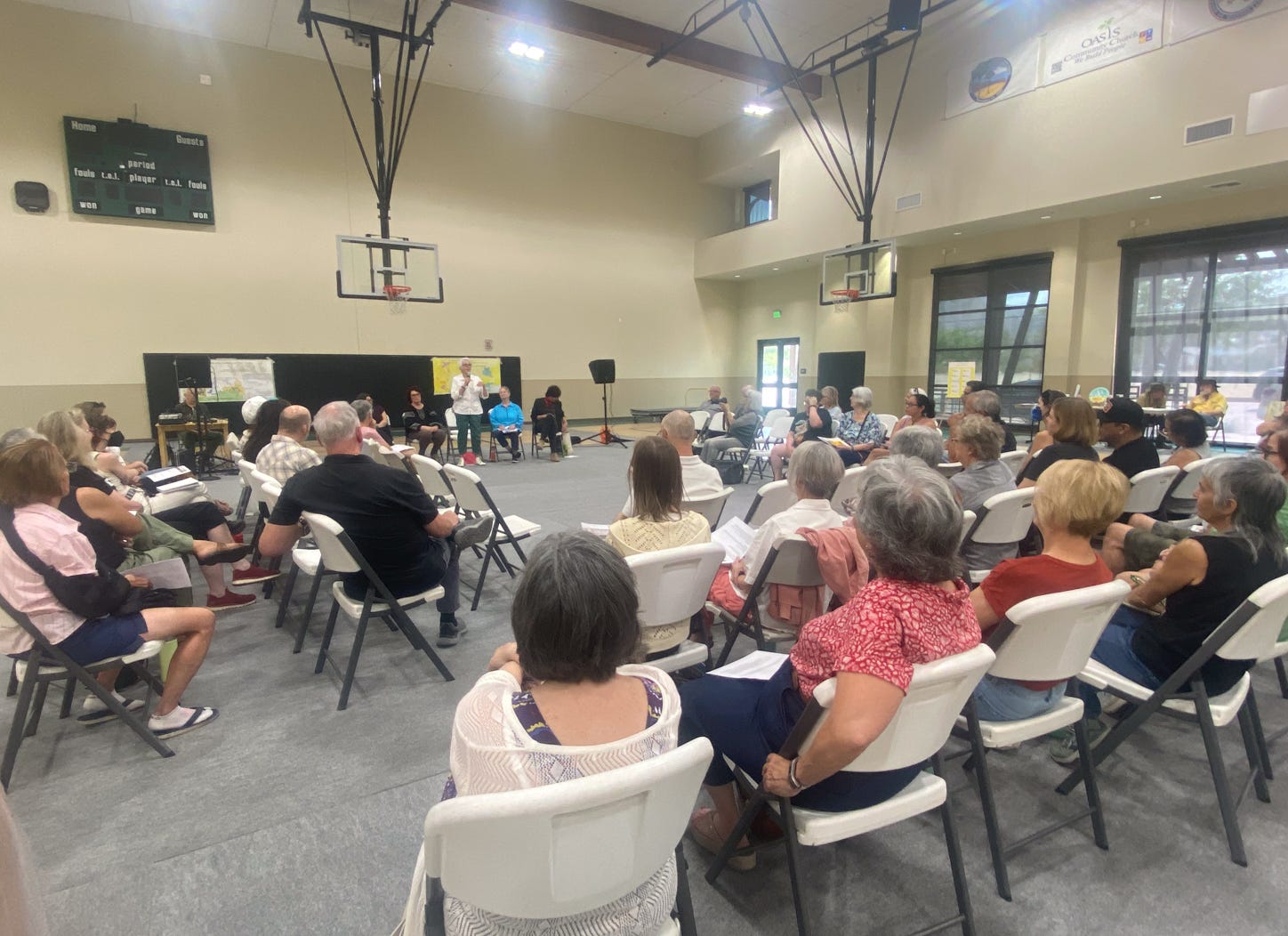
How can our communities balance economic development with the need to conserve and protect critical desert environments? This topic, and tension, was the focus of the Finding Balance Town Hall, which took place on Saturday, May 31, at the Twentynine Palms Community Center. The conversation was hosted by the Morongo Basin Conservation Association (MBCA) and the Indian Cove Neighbors Organizing Committee. It was moderated by Cindy Bernard, editor of the Desert Trumpet. The afternoon featured presentations from Kat Talley-Jones, sitting in for Luke Basulto of the National Parks Conservation Association; Pat Flanagan and Laraine Turk of the Morongo Basin Conservation Association; and Rich Good, local business owner, and musician. Bernard, Talley-Jones, and Good are also all members of the Indian Cove Neighbors Organizing Committee. Twentynine Palms Parks and Recreation provided the gym space for the meeting, which was attended by about 60 community members from throughout the Morongo Basin,
The lively presentations and wide-ranging community discussion focused on conservation, sustainable growth, and the need for greater coordination and communication throughout the Morongo Basin around issues related to development and environmental protection. Speakers highlighted the need for lodging for visitors that respects desert ecology, revitalizes existing vacant or blighted buildings and commercial areas, and supports local businesses. Throughout the afternoon participants shared ideas for next steps and emphasized the importance of defining shared objectives and positive outcomes.
A planned tension: Development versus preservation
The tension between preservation and growth is at the heart of the plans that guide development in the Morongo Basin. Bernard opened the afternoon’s discussion by referring to both the Twentynine Palms General Plan Guiding Principles and the Yucca Valley General Plan. These plans were last updated by each city in 2012 and 2014, respectively. Both plans emphasize a focus on retaining a small town feel, promoting a high quality of life, and being a desirable destination for visitors, while preserving the desert environment. Each references attracting development, especially related to retail and hospitality businesses. Bernard explained that these multiple goals can feel like opposing pressures on the communities of the Morongo Basin.
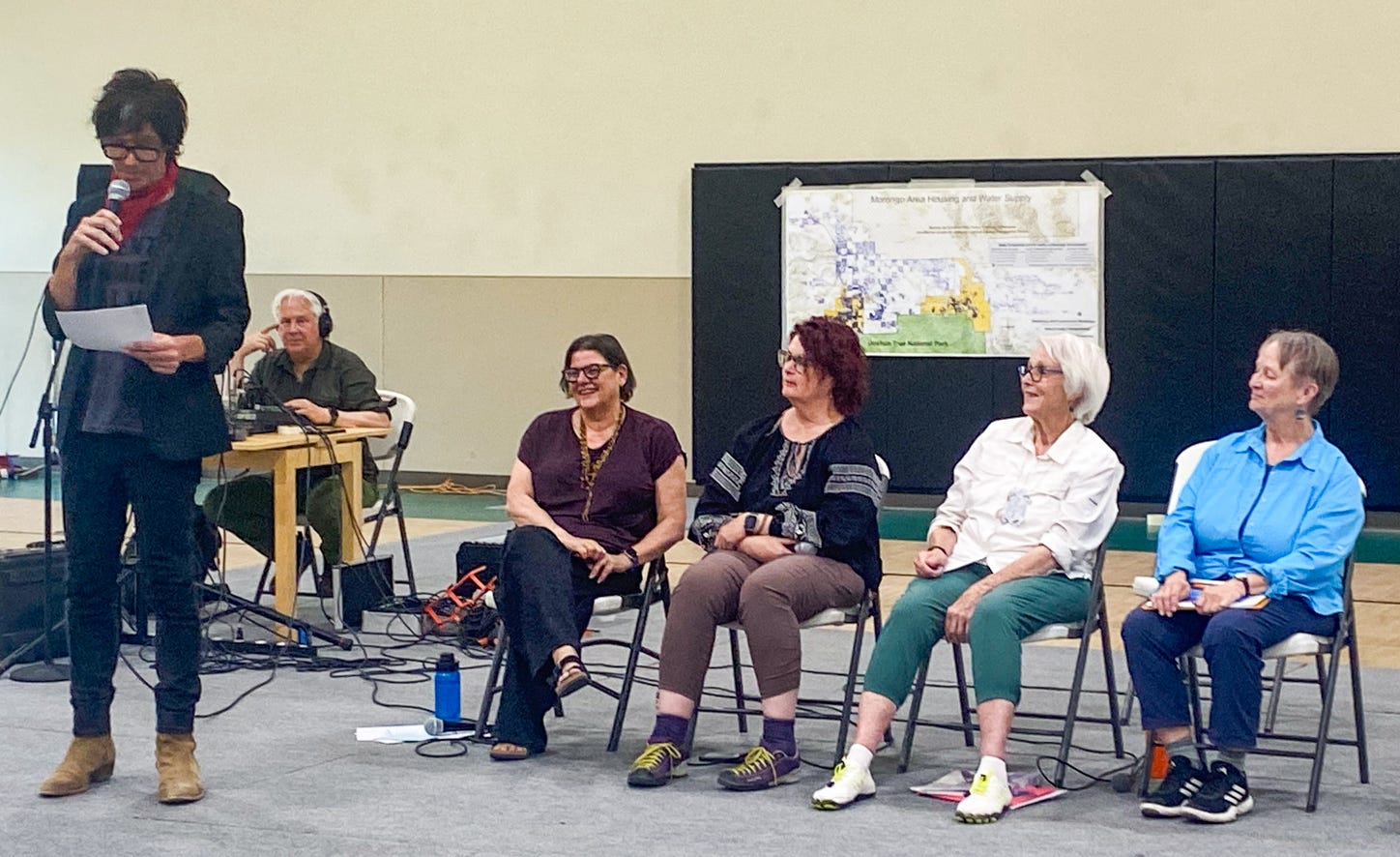
Bernard also noted that conservation efforts have been woven into the history of desert communities and that MBCA founder Susan Luckie Reilly was an Indian Cove resident. Laraine Turk added how the MBCA began when Luckie Reilly began organizing against the construction of an Edison 500-kilovolt power transmission line through the Hi-Desert, and that conversations like this one were a continuation of similar grassroots efforts.
Ofland Hotel: A proposed development out of balance
The proposed Ofland Hotel resort in Indian Cove, along with the LoveMore Ranch development in Joshua Tree, were a focus of the conversation. Both speakers and participants brought these up as examples of development that many residents feel are out of balance with the goals of both preserving fragile desert ecology and supporting economic development. Rich Good, of the Indian Cove Neighbors Organizing Committee and the co-owner of Very Very in Twentynine Palms spoke to the specifics of the Ofland resort development.
A part-time resident since 2006 and a full-time resident for the past decade, Good emphasized that he’s seen much positive economic development in the area, especially in downtown Twentynine Palms. Good reminded participants that development, when done right, can keep our communities thriving, noting,
“I want to see our town flourish with carefully planned new developments that will help us grow while maintaining the unique character that drew us all here in the first place.”
Good mentioned examples of developments, such as Hotel Wren, RESET, Corner 62, and the Historic Plaza, that encourage development but do not incur unnecessary damage on the environment, and often improve existing buildings and infrastructure. He contrasted these recent developments with the plans for Ofland and shared facts about the project including:
The resort will cover 52 acres on a 152-acre parcel within the Indian Cove neighborhood.
The proposed site is currently zoned residential for 60 houses and Ofland is applying to have the land rezoned to commercial.
The proposed resort will consist of 100 cabins, one main lodge, a secondary lodge, dorms for workers, a restaurant, outdoor movie theater, parking for 132 vehicles, and a package treatment plant for sewage. custom sewage facility
If built, vehicle traffic in Indian Cove is estimated to increase to 894 trips per day and the population of Indian Cove would increase 45% based on average resort occupancy.
The project has not conducted an environmental impact study and instead the city of Twentynine Palms found the project could conduct a far less costly and extensive Mitigated Negative Declaration (MND) instead.
To offset potential housing lost due to the proposed rezoning of residential land to commercial tourist for the Ofland proposal as required by SB330, it appears that a decision was made1 to add to the already proposed upzoning of residential parcels associated with the proposed E-Group PS solar project west of Harmony acres, which has a similar rezoning requirement.
Good highlighted the negative impacts the resort could have on both the neighborhood of Indian Cove and the city of Twentynine Palms as a whole. He pointed to construction noise and dust, and the displacement and destruction of wildlife. He also questioned whether the resort would bring more business to downtown Twentynine Palms because it is situated between Joshua Tree and Twentynine Palms, and will offer its own restaurant, shop, and amenities for guests. Changing the zoning, he warned, could also set a dangerous precedent and open the door to additional unwanted growth.
According to Good, alternatives to the type of development that Ofland is proposing include:
Developing in current commercially zoned areas.
Refurbishing existing buildings.
Placing developments close to one another so a greater number of businesses benefit.
He said,
“I’m pro-Twentynine and this development is not pro-Twentynine … We can welcome development and grow our little City without erasing our dark skies or displacing wildlife corridors in the process. Twentynine Palms is a place I'm always excited to share with others. Let's keep it that way.”
This sentiment was shared by many participants, including Beth Anderson, who read a statement from Patty O’Toole, the owner of Raven’s bookshop, a longtime resident of Indian Cove.
“The most important thing is to preserve the peace and serenity of the desert. We need the vast beauty, emptiness to some, uncompromised by progress that allows our brain and body to relax. Money can't buy this once it's ruined. It's just another desert town, nothing special.”
The Twentynine Palms Planning Commission will hold a special session to consider the Ofland project on June 25, 2025 and the public can submit comments about the project up until the time of the meeting.
You can read more about these issues in the the Desert Trumpet's previous coverage of the Ofland Hotel project including our “29 Palms Planning provides key boost to proposed Ofland Hotel resort development near Indian Cove” from May 18, 2025, "2024 Development Recap" from December 7, 2024, "Ofland Resort Takes Another Shot at Winning Over Indian Cove Residents" from March 3, 2024 and "We have a housing crisis, not a recreation crisis" from December 9, 2023.
Undeveloped does not mean empty: Protecting wildlife and lands from development in the Morongo Basin
The ways that unchecked development can impact desert wildlife and how to stand up to protect them was also a key focus of the afternoon. Kat Talley-Jones, writer for the Desert Trumpet, relayed talking points from Luke Basalto, the Calfornia Desert Program Manager for the National Park Conservation Association, who was unable to attend. Talley-Jones remarked,
“The desert is not empty, it's active and alive. City officials have spoken about activating the desert, but from an ecological and community standpoint, much of that land is already activated.”

Open spaces of the desert are essential homes for wildlife, including desert tortoises, kit foxes, badgers, migratory birds, and pollinators. Talley-Jones emphasized the importance that the open lands in the Morongo Basin, such as Joshua Tree National Park and the 29 Palms Marine base, serve as corridors for wildlife, bridging other open spaces such as BLM-managed land and the Mojave National Preserve, and supporting desert species’ ability to adapt to heat, drought, and long-term climate shifts.
Making reference to the proposed Ofland development, Talley-Jones noted that it was particularly dangerous for wildlife because,
“Fragmenting that movement, especially in areas just outside park boundaries, means cutting the Park off from the wider landscape that supports it. Many of the planned developments being dusted off were created before we understood how desert ecosystems work. Activating these plans without reconsideration puts us at risk of fragmenting wildlife corridors, disrupting aquifers and water recharge, and creating visual and noise pollution that undermines our rural quality of life.”
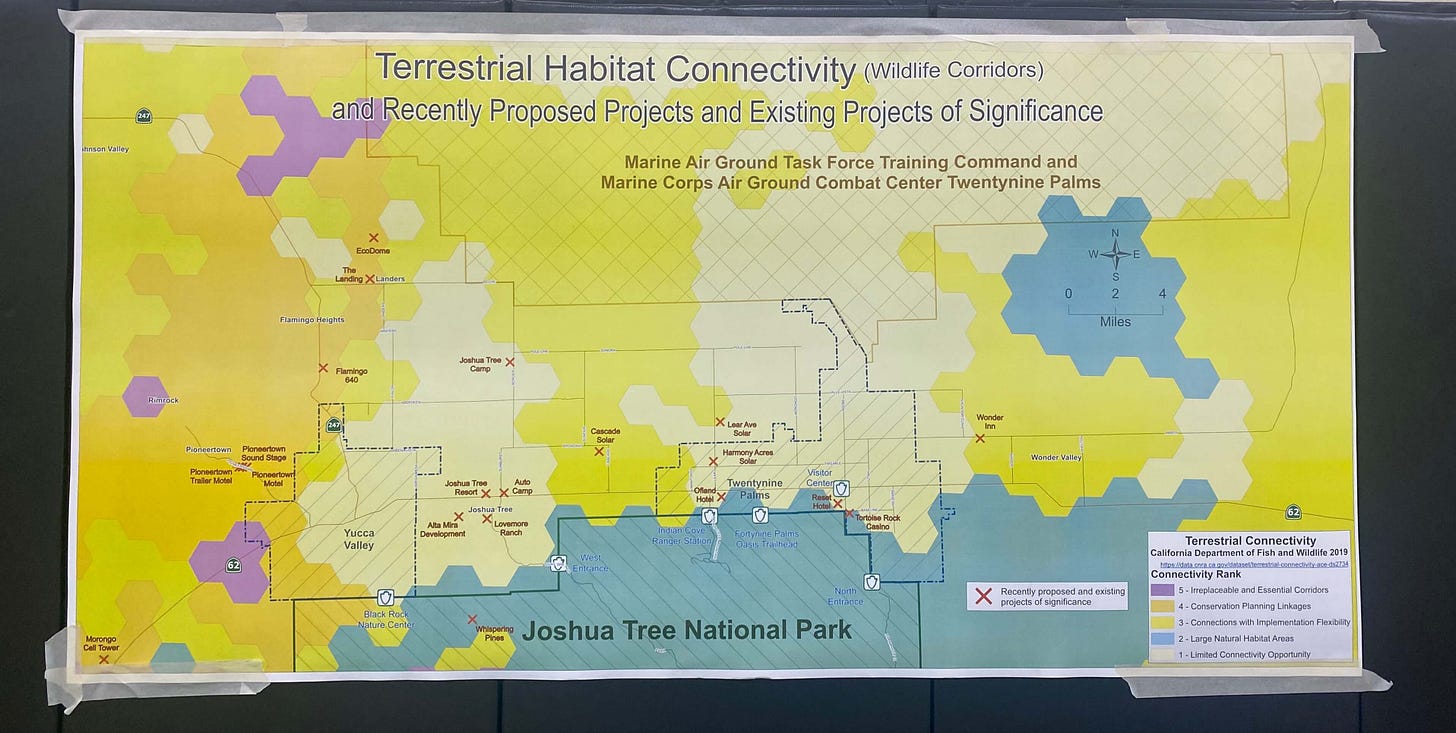
A positive development for wildlife crossings
Geary Hund, board member and former executive director of the Mojave Desert Land Trust, followed Talley-Jones's presentation with a short, positive update about wildlife crossings over state Highway 62, which bisects crucial habitats. Connection between these areas would create:
“A desert leg, if you will, of connectivity [of protected, open spaces] all the way from Mexico to Canada. It's also a very important linkage for wildlife to be able to respond to climate change, because you have desert lands that are that are less than 1,000 feet in elevation all the way up to San Gorgonio peak, which is over 11,500 feet. So as the Mojave is getting hotter, it provides wildlife an opportunity to shift their range northward.”
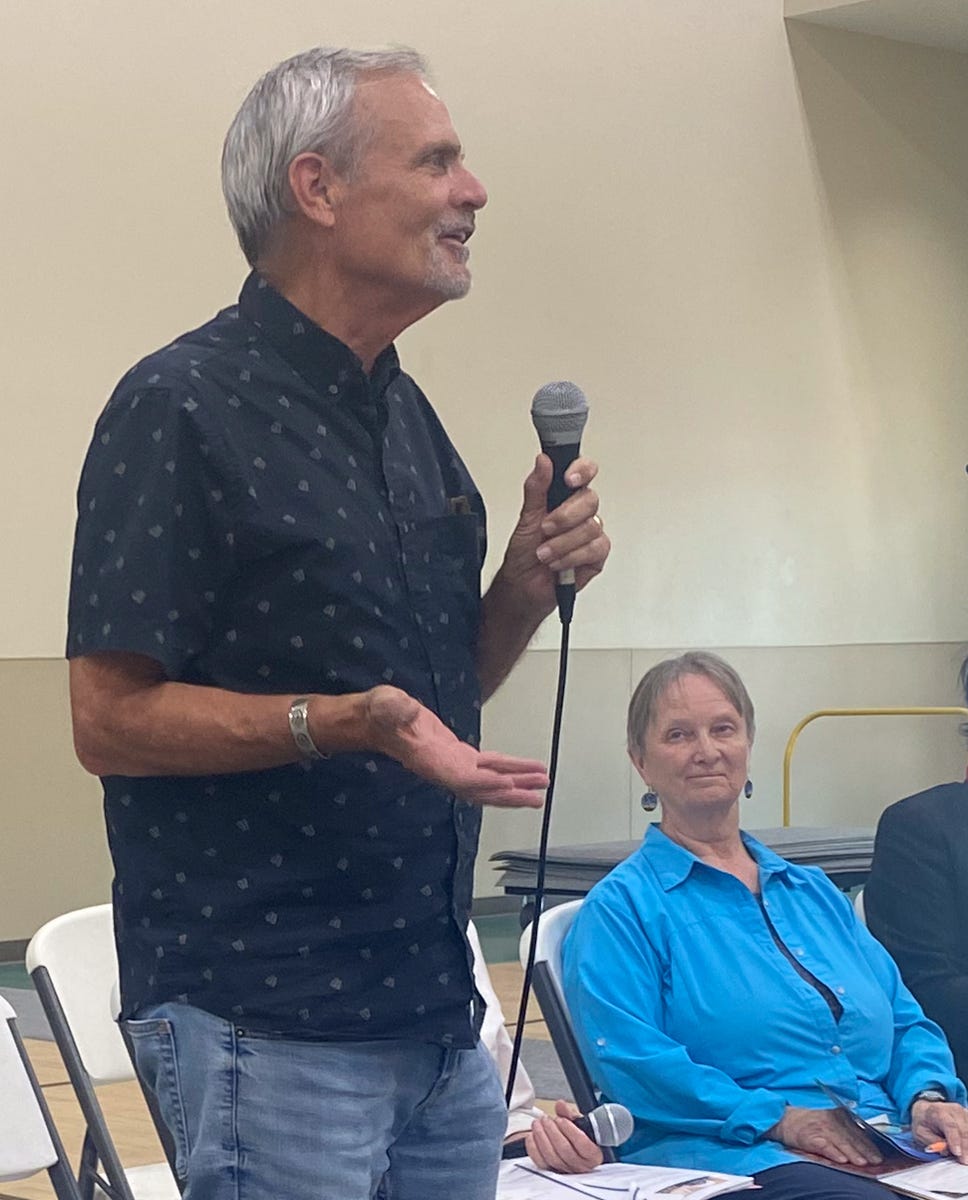
Hund shared that CalTrans and the Mojave Desert Land Trust are partnering to apply for funding to conduct the planning process and begin construction for two wildlife crossings in Morongo and Yucca Valley. After submitting a pre-application in April, they were invited to prepare a full grant application. While the process will take about 8-10 years to complete if the grant is approved, this is an important step in the process.
Jennifer Rendon of Joshua Tree asked how community members could best get involved and support these crossings. Hund let participants know that because it is still early on in the grant process there is not a concrete call to action yet, but the Morongo Basin Conservation Association and Mojave Desert Land Trust will put out a call for support when the process is further along. He noted that support from citizens, business owners, and “nontraditional” voices is especially important for moving projects like these forward.
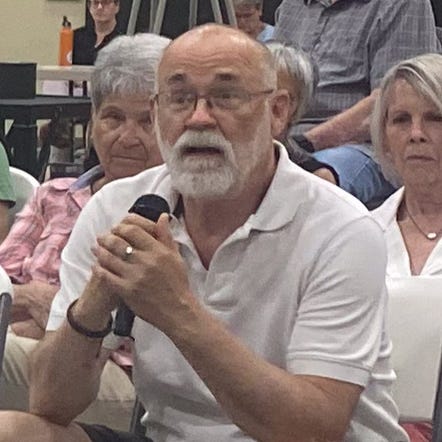
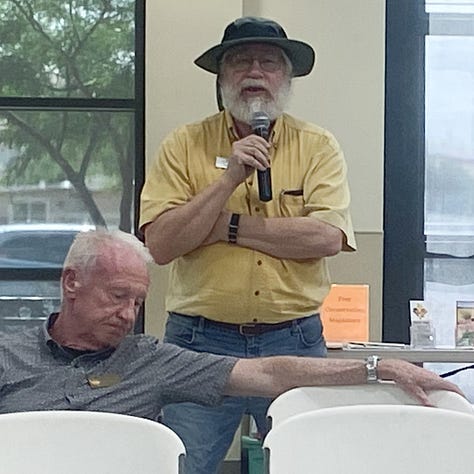
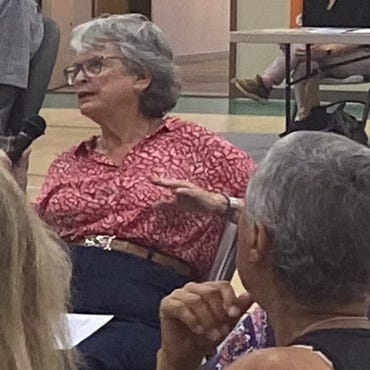
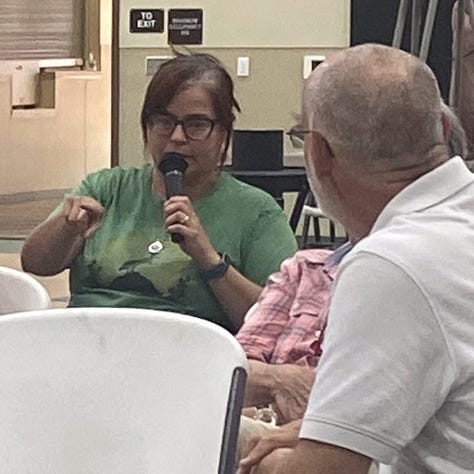
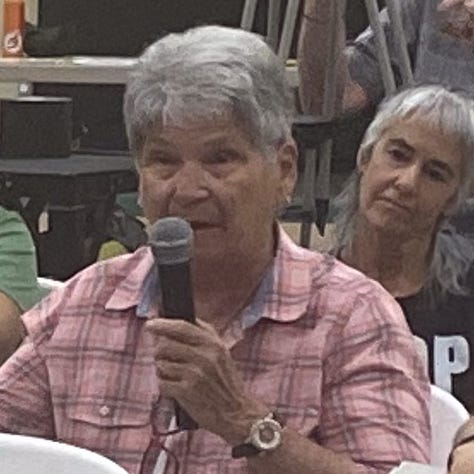
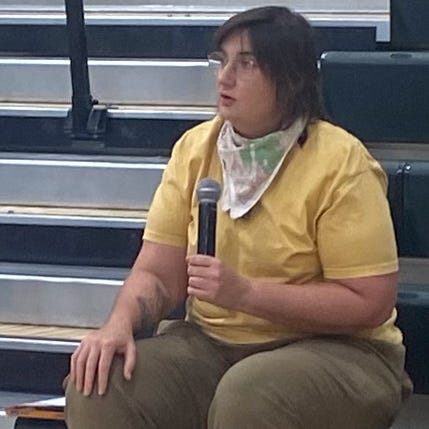
A focus on community engagement, representation, and development
Representation, education, and community involvement were major themes of the afternoon and the Town Hall had an overall proactive tone. Guest speakers and community members brought up multiple ways that residents can stay informed, get involved, speak up, and push back against proposed developments, as well as create a proactive, positive vision for development. However, they also concurred that there could be more transparent lines of communication when it comes to development, especially at the county level.
Talley-Jones summarized the type of actions that community members can take to support support wildlife and resist damaging development:
Show up at planning commission meetings and city council hearings where decisions are made to demand smart planning.
Reevaluate outdated development plans through a modern ecological lens.
Support infill development and adaptive reuse.
Advocate for wildlife corridor protections in general plans and zoning updates.
“Your voice matters more than a developer's consultant vision for the future,” Talley-Jones encouraged participants, reminding them
“We're not against change. We're for intentional change that keeps the spirit of this place alive. Morongo Basin has a chance to lead by example, to show how rural desert communities can grow in a way that protects wildlife, water and community character. It's about more than land use. It's about our identity, our responsibility and our relationship to this landscape.”
Support your views and push back with research
Becoming an expert in your specific area can help craft more convincing arguments and opposition. Laraine Turk of the MBCA shared that their organization regularly contributes in-depth research to help residents push back against current development projects. She offered the MBCA’s website and mailing list as a valuable resource. She explained, “On the topic of finding balance, whether it's a solar project or a housing project or a resort, we are very seldom going to stop it, and we know that. So what can we point out to them with research behind it?... And this is what can make a difference,” when submitting public comments to oppose or slow down a project. Other speakers concurred that it’s important, when submitting comments, to be specific about why you oppose a project, not just that you don’t like it, and that is where research can be very valuable.
Understand the general plan for your area
Pat Flanagan, board member of the MBCA, provided a concrete path for local residents to get more involved in planning conversations: Understand the general Plan as it relates to their specific residence. “How many people here have read the General plan connected with their location? How many people here know the land use around the house that you live in?” she asked.
Flanagan recommended that residents understand the general plan and building codes related to their area, as well as the criteria of the California Environmental Quality Act (CEQA). This knowledge can empower residents to know what is protected around them, what is vulnerable to development, and what resources they may have to push back.
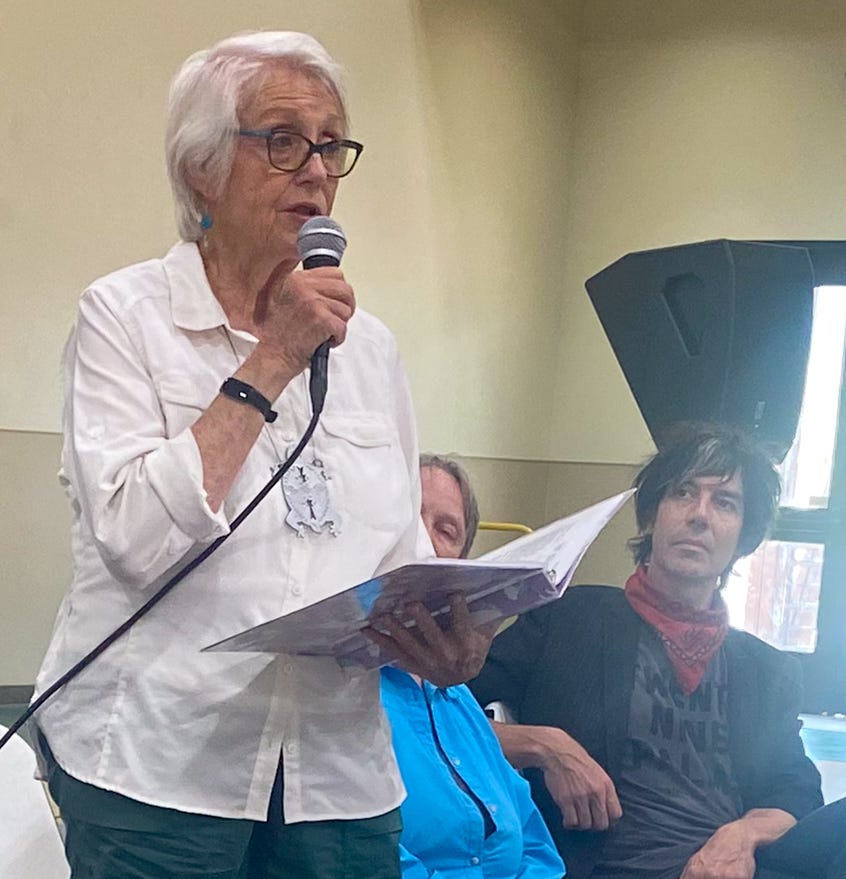
For those who feel reluctant or that the plans are boring, she suggested getting together with others concerned about development and the future of their neighborhoods and going through the plan, potentially over a glass of wine. She emphasized,
“They’re not boring when your house is in it. Because once your house is there, once your job is there, and somebody wants to put a hotel or somebody wants to put a gas station across from where you live, it makes a difference.”
Bernard also encouraged participants to consider starting neighborhood councils that could review the general plan, and think about what the needs of the place where they live are. “Start at that granular level and think about what things do we need here? Do we need a community market? What kind of development do we actually need to make our neighborhood function better?”
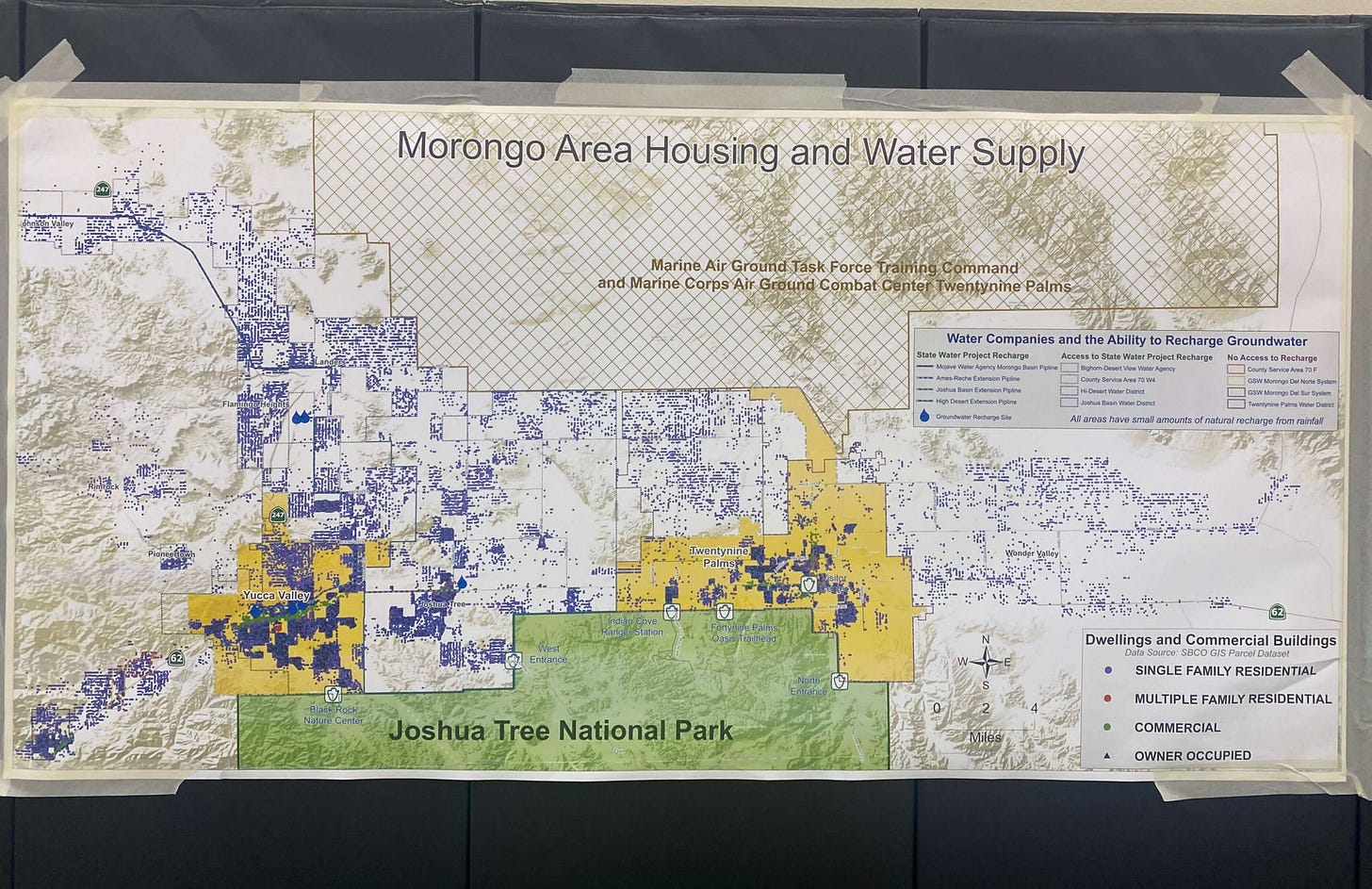
Pay attention to Community Action Guides for unincorporated areas
Residents in unincorporated communities such as Morongo Valley, Joshua Tree, Wonder Valley, and Flamingo Heights can refer to Community Action Guides to understand the vision for development in their communities. These guides were created in 2016 when San Bernardino County held a series of public meetings to identify the strengths, weaknesses, and aspirations of unincorporated communities and create guidelines to address them. These guides are available from the county’s website. Ray Kennedy, a resident of Morongo Valley, encouraged those living in unincorporated areas to be familiar with their Community Action Guide and monitor its implementation because, “At some point the county is going to turn around and say, ‘Well, you obviously didn't care enough to monitor the implementation of your own community action guide. So you know, why do we need to listen to you?’’’
A call to bring back the Municipal Advisory Council
For better communication and accountability with the county for all residents Kennedy advocated for bringing back the Municipal Advisory Council (MAC). The MAC, which is written into state law, is a vehicle through which residents of unincorporated areas can have direct and open communication with their representing supervisor. This is especially important for residents who live in unincorporated areas of San Bernardino County because they don’t have access to a local planning board or city council, but must travel to San Bernardino to meet with the County Board of Supervisors to voice concerns or ask questions.
Kennedy has been energetically advocating for re-establishing the MAC in the Morongo Basin. Several former MAC members were in attendance, including Kennedy, Flanagan, and David Fick. Kennedy noted that,
“We need to be pressuring the county not only to listen to us on a one-time basis, but to reopen the channels that we used to have to communicate with the county. The MAC needs to be brought back, and we need the Joshua Tree remote location permanent, not just on an occasional basis.”
The opacity of public notice about development projects
Participants discussed multiple development projects in various states of the proposal and approval process, and specifically brought up concerns about the lack of transparency for public comment. These include the LoveMore Ranch in Joshua Tree, where Joshua Tree Village Neighbors recently filed a lawsuit against the developers and San Bernardino county for alleged lack of proper notification as well as CEQA violations, the Joshua Tree Resort, and the Ofland resort project that was a particular focus of this meeting.
Participants acknowledged that staying vigilant about what’s taking place at the county level can be challenging, but an important start is to sign up for county alerts to stay informed. For those based in Yucca Valley and Twentynine Palms, which may not be serviced by county alerts, it’s also important to check the classifieds in the Hi-Desert Star and Desert Trail for development-related announcements.
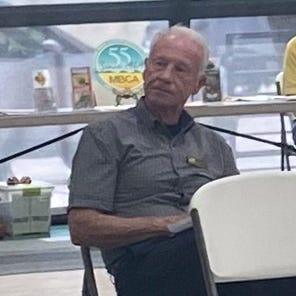
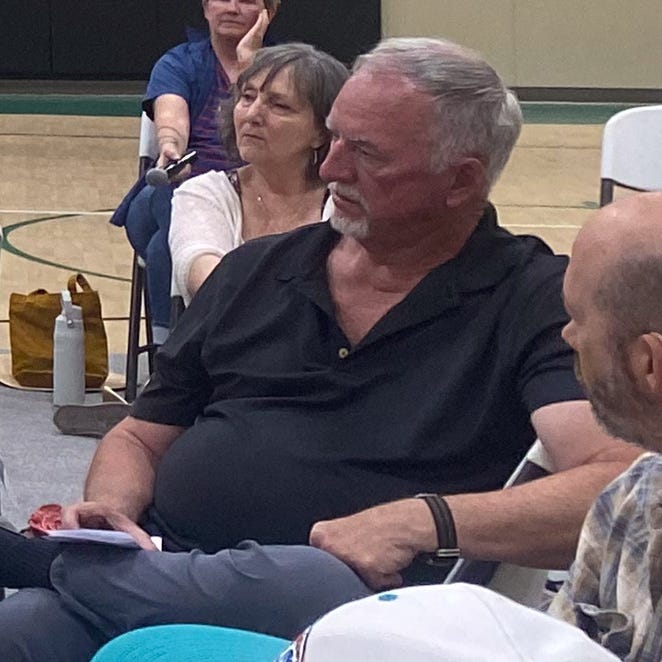
Coming together to support a collective vision and smart growth
Communities in the Morongo Basin are closely tied together, and a united approach is important for preservation efforts to be the most impactful. Erin Gatlin reiterated a point made by several speakers that what happens in one community affects others, remarking, “If somebody sneezes in Wonder Valley, we're going to get a cold in Yucca Valley.”
Participants suggested a number of possible solutions and next steps to take action and continue the conversation. Ideas ranged from a creating a zone that includes a moratorium on new development in certain areas in Twentynine Palms to working to form a new smaller, more responsive county, to increasing the number of supervisors on the board of supervisors, to advocating for the reinvestment of the Transient Occupancy Tax (TOT) the county collects from hotels, motels, and short term rentals in incorporated areas like Joshua Tree back into those areas.
Prioritizing ideas and coming up with an overall vision is a critical, and long term, process. Caitlin Gill, owner of Joshua Tree Astronomy Adventures, encouraged participants to come together to define and advocate for what they do want, not just to push against what they don’t. Gill grew up in Napa County and witnessed the struggle to preserve the character and fragile ecology of the region. She noted that it took decades for residents to align on a positive, sustainable vision for development and tourism in the region.
Tourists will continue to flow to a place like the Hi-Desert, Gill reminded participants, and plans shouldn't be contingent on stopping the flow of visitors, but managing it. Gill suggested that groups from neighborhoods and community organizations come together to start the conversation about,
“How do we revitalize businesses downtown that are just open space? Change the face of lodging in this region to be more appealing, and focus on small business development, since that's the character it seems like we all want. It is an opportunity, and I'd be excited to see our town embrace it as one.”
Overall the town hall highlighted how the process of finding balance between development and environmental protection is not a static destination, but an ever-evolving process and one that necessitates community involvement and input every step of the way.
Leave your thoughts in the comments below. Please note that we do not allow anonymous comments. Please be sure your first and last name is on your profile prior to commenting. Anonymous comments will be deleted.
Feel free to share this article!
Are you subscribed?
This decision was revealed in the publication of the Mitigated Negative Declaration for Ofland that was published on May 14, 2025.


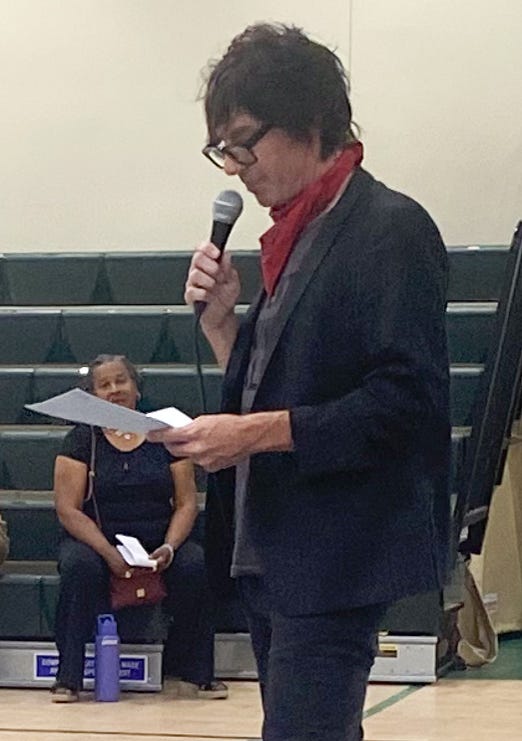
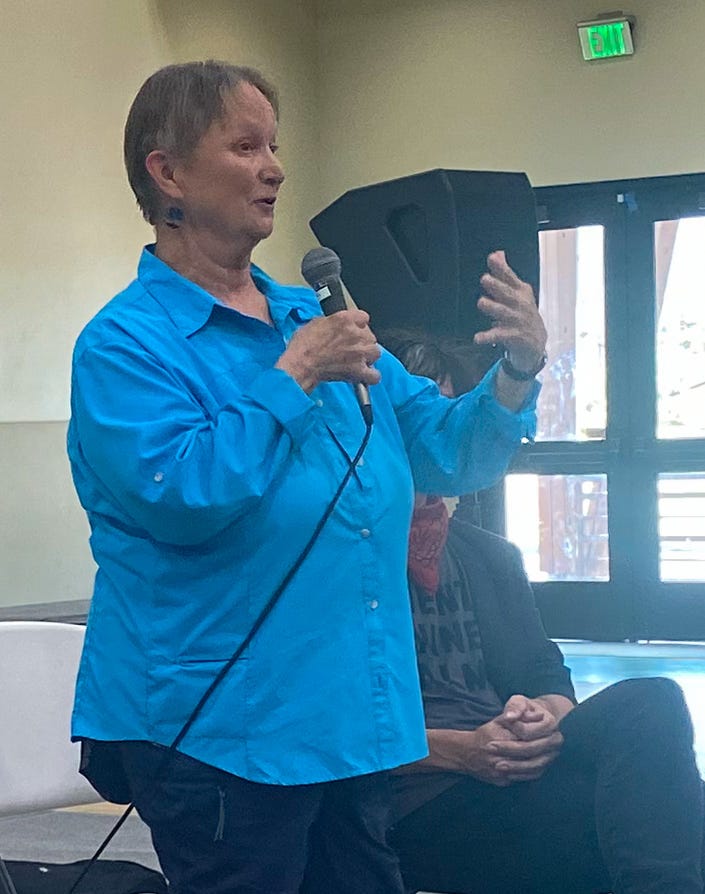
Excellent reporting. Thank you. The links to key documents are valuable. Will share.
I really appreciate all this information as I am a former resident of Morongo Valley and was on the land use committee back in 2004-2007 . Spreading the word.